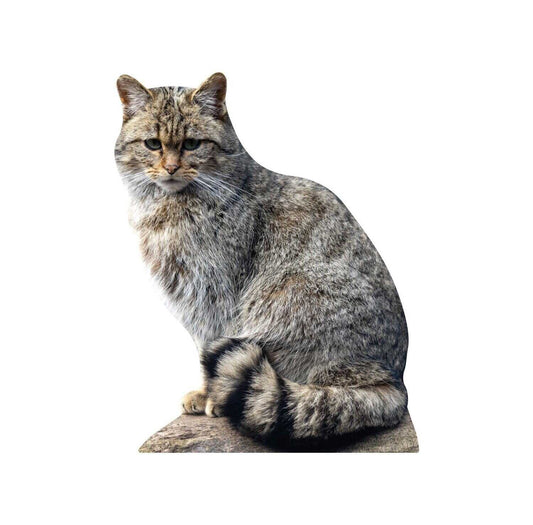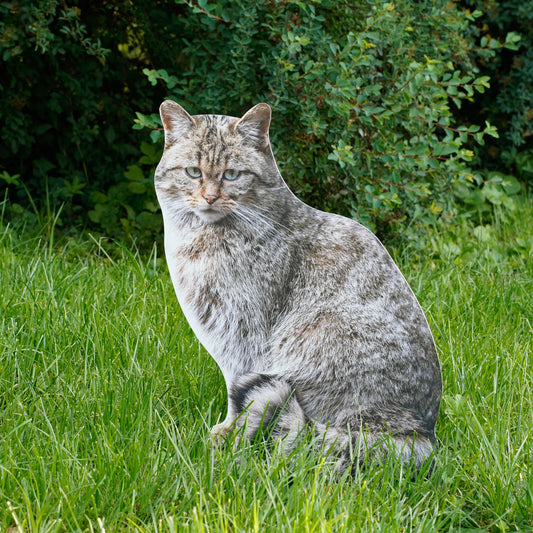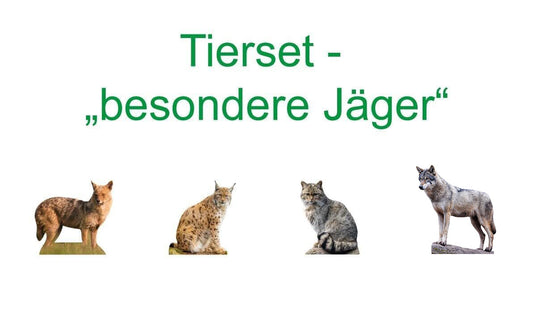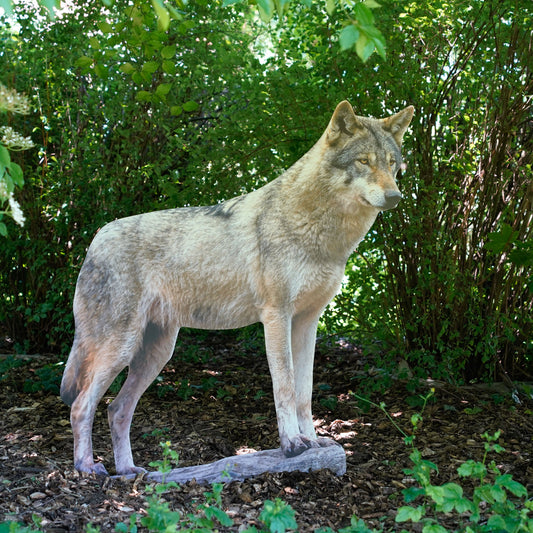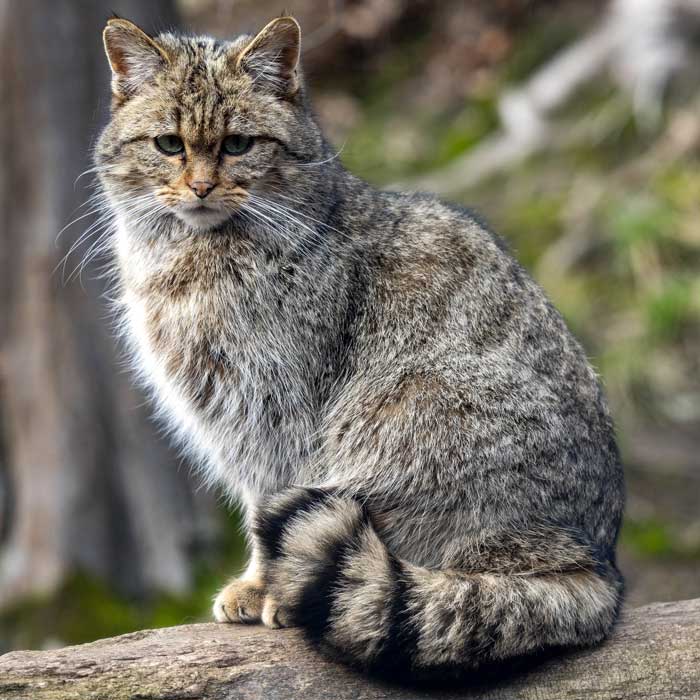
wildcat
The wildcat, a shy and rare predator, is critically endangered and requires urgent conservation measures to ensure its survival. This fact sheet provides a detailed overview of the wildcat's biology and lifestyle and highlights the importance of its protection and conservation in natural habitats.
wildcat Products
-
Animal display wildcat
Regular price From 39,90€Regular priceUnit price / per -
Animal set - "special hunters"
1 reviewRegular price From 299,90€Regular priceUnit price / per329,90€Sale price From 299,90€Sale -
Animal display wild cat - outdoor set
No reviewsRegular price 55,50€Regular priceUnit price / per
Profile: wildcat
-
Scientific classification
- Class: Mammals (Mammalia)
- Order: Carnivora
- Family: Cats (Felidae)
- Genus: Felis
- Species: F. silvestris (wild cat)
-
Physical characteristics
- Size: Body length of 45-75 cm
- Tail length: 25-35 cm
- Weight: 2-5 kg
- Special features: Medium-sized cat with a robust build, blunt tail, short ears, grey-brown fur with dark stripes and spots, whitish belly.
-
Habitat and distribution
- Common regions: Europe, North Africa, parts of Asia
- Habitat: Mainly forests, but also hedges, mountainous regions, and swampy areas.
-
Nutrition
- Diet: Carnivore
- Typical food: small mammals such as mice, rats, rabbits, birds, but also insects and occasionally fruits.
-
Reproduction and lifestyle
- Mating season: Spring
- Gestation period: Approx. 60-68 days
- Litter size: 3-6 young per litter
- Lifestyle: Solitary, nocturnal, excellent hunters, territorial behavior.
-
Lifespan and protection status
- Life expectancy: Up to 12 years in the wild
- Endangered status: Critically endangered due to habitat loss, hybridization with domestic cats, and hunting.
- Conservation measures: preservation and protection of habitats, targeted breeding and release programs, avoidance of hybridization.

